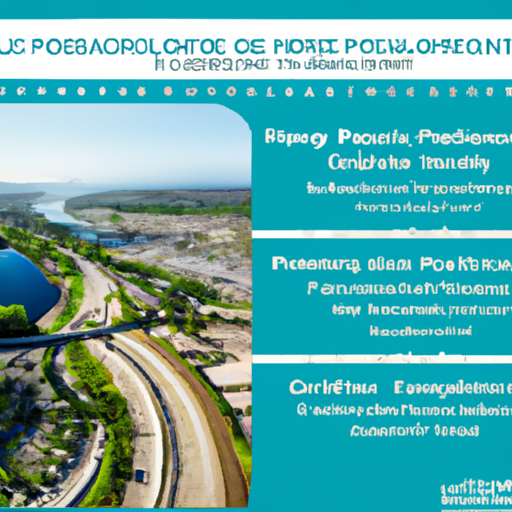Looking to optimize your project efficiency and enhance your team’s performance? Look no further than “Project Excellence.” In this article, we will provide you with valuable insights and information about nearshore technical staffing. Whether you’re wondering about the types of technical roles that can be filled, the regions typically considered, or how to ensure the quality of nearshore technical professionals, we’ve got you covered. Discover the benefits of nearshore staffing and learn how it can seamlessly integrate with your existing team, regardless of the size of your business. Ready to take your projects to the next level? Let’s get started.
Project Excellence

This image is property of pixabay.com.
1. What is Project Excellence?
Project Excellence refers to the high level of performance and success achieved in the execution of a project. It involves consistently delivering projects that meet or exceed stakeholders’ expectations, meet the project objectives, and are completed within the given budget and timeline. Project excellence is achieved by effectively managing all aspects of the project, including planning, executing, monitoring, and controlling, and ensuring that the project is aligned with the organization’s goals and strategic objectives.
2. Benefits of Project Excellence
There are numerous benefits to achieving project excellence. Firstly, it leads to higher customer satisfaction as projects are completed on time, within budget, and with high-quality deliverables. This builds trust and strengthens relationships with clients, leading to increased business opportunities and referrals. Additionally, project excellence results in improved project team morale and motivation, as team members feel a sense of accomplishment and pride in their work.
Furthermore, project excellence enhances the organization’s reputation and brand image in the marketplace. It showcases the organization’s ability to successfully deliver complex projects, attracting more clients and top talent. It also allows the organization to gain a competitive edge over its competitors by demonstrating its expertise and capability to consistently deliver outstanding projects. Moreover, project excellence contributes to organizational learning and continuous improvement, as lessons learned from successful projects can be used to further enhance future projects.

This image is property of pixabay.com.
3. Examples of Project Excellence
Several projects across various industries serve as examples of project excellence. One such example is the construction of the Burj Khalifa in Dubai, the tallest building in the world. This project involved multiple stakeholders, complex engineering challenges, and tight deadlines. Despite these challenges, the project was completed successfully, demonstrating project excellence in terms of design, construction quality, and timely completion.
Another example is the development of the iPhone by Apple Inc. This project revolutionized the smartphone industry and showcased project excellence in terms of innovation, product design, and marketing. The iPhone’s success can be attributed to meticulous project planning, effective resource management, and exceptional execution.
4. Characteristics of a Project Excellence Culture
A project excellence culture is characterized by a set of values, attitudes, and behaviors that prioritize and promote the achievement of project excellence. In such a culture, project managers and team members are empowered and encouraged to strive for excellence in all aspects of their work. Key characteristics of a project excellence culture include:
-
Commitment to delivering high-quality projects: Every individual involved in a project, from the project manager to the team members, is committed to delivering projects of the highest quality. They take pride in their work and strive for perfection in meeting project objectives and customer expectations.
-
Strong leadership and clear communication: A project excellence culture is fostered by strong leadership that effectively communicates the project vision, goals, and expectations. Leaders provide clear direction, empower team members, and foster a collaborative and transparent environment.
-
Continuous learning and improvement: In a project excellence culture, there is a commitment to continuous learning and improvement. Lessons learned from previous projects are documented and shared, and processes and methodologies are regularly reviewed and refined to enhance project outcomes.
-
Focus on stakeholder satisfaction: Project excellence culture emphasizes the importance of understanding and meeting the needs and expectations of project stakeholders. Regular communication and feedback loops are established to ensure alignment and to address any concerns or issues promptly.

This image is property of pixabay.com.
5. Steps to Achieve Project Excellence
Achieving project excellence requires a systematic approach and a series of steps. Here are the key steps involved in achieving project excellence:
-
Clearly define project objectives: The first step is to clearly define the project objectives, including specific deliverables, timelines, and budget constraints. This ensures that everyone involved in the project has a clear understanding of what needs to be achieved.
-
Develop a comprehensive project plan: A comprehensive project plan serves as a roadmap for the project. It includes a detailed breakdown of tasks, allocation of resources, timelines, and milestones. The plan should be well-structured, realistic, and flexible enough to accommodate changes or unforeseen circumstances.
-
Build a high-performing project team: Assembling a high-performing project team is crucial for project excellence. It involves selecting individuals with the right skills, experience, and attitude for each role. Team members should have clear roles and responsibilities, and there should be effective communication and collaboration throughout the project.
-
Implement effective project management practices: Effective project management practices, such as regular monitoring and reporting, risk management, and change control processes, are essential for project excellence. Project managers should actively monitor progress, identify and address any issues or risks promptly, and make necessary adjustments to ensure project success.
-
Continuously evaluate and improve: Continuous evaluation and improvement are key to achieving project excellence. Regularly assess the project’s performance against the defined objectives and identify areas for improvement. This can include reviewing lessons learned, implementing corrective actions, and sharing best practices within the organization.
6. Tools and Techniques for Project Excellence
Various tools and techniques can be employed to enhance project excellence. Here are some commonly used ones:
-
Project management software: Project management software provides a centralized platform for managing and monitoring all aspects of a project. It allows for efficient collaboration, document sharing, task tracking, and reporting, improving project visibility and control.
-
Agile methodologies: Agile methodologies, such as Scrum or Kanban, promote adaptive planning, continuous delivery, and flexibility. These methodologies enable teams to respond to change quickly and deliver value to stakeholders incrementally, leading to improved project outcomes.
-
Risk management techniques: Effective risk management is crucial for project excellence. Techniques such as risk identification, analysis, and mitigation help project teams proactively identify and manage potential risks, minimizing their impact on project objectives.
-
Quality management tools: Quality management tools, such as checklists, control charts, and process flowcharts, help ensure that project deliverables meet the required quality standards. These tools assist in identifying, tracking, and resolving quality issues throughout the project lifecycle.

7. Challenges in Achieving Project Excellence
While striving for project excellence, various challenges may arise. Some common challenges include:
-
Limited resources: Projects often face constraints in terms of budget, time, and resources. Managing these constraints effectively while still delivering high-quality projects can be challenging.
-
Changing requirements: Stakeholder requirements and expectations may change throughout the project, requiring adjustments and potentially impacting project outcomes.
-
Communication and collaboration: Effective communication and collaboration among project team members, stakeholders, and external partners are essential for project excellence. However, challenges can arise when team members are geographically dispersed or have different communication styles.
-
Project complexity: Projects can often be complex, involving multiple tasks, stakeholders, and dependencies. Managing and coordinating these complexities requires careful planning and execution.
8. Future Trends in Project Excellence
In recent years, several trends have emerged that are shaping the future of project excellence. Some of these trends include:
-
Agile project management: Agile methodologies are increasingly being adopted in various industries as they offer flexibility, adaptability, and the ability to respond quickly to changing requirements. Agile project management approaches are becoming the norm rather than the exception.
-
Digital transformation: The integration of digital technologies into project management processes is transforming how projects are executed and monitored. Tools such as artificial intelligence, data analytics, and automation are being utilized to streamline project workflows and enhance decision-making.
-
Remote project management: With the rise of remote work and virtual teams, project managers are adapting to managing projects remotely. This trend requires a focus on effective communication, collaboration, and the use of remote project management tools and technologies.
-
Sustainability and social responsibility: Projects are increasingly being evaluated based on their environmental impact, social responsibility, and sustainability. Organizations are incorporating these factors into project management practices and decision-making processes.

9. Case Studies on Project Excellence
Several case studies highlight successful examples of project excellence. One such case study is the construction of the Panama Canal Expansion Project. This project involved the expansion of the existing canal to accommodate larger ships, which required meticulous planning, engineering expertise, and strict adherence to budget and timeline. Despite facing various challenges, including adverse weather conditions and geological complexities, the project was completed successfully, improving global trade connectivity and demonstrating project excellence.
Another case study is the SpaceX Falcon Heavy launch, which marked a major milestone in space exploration. This project involved the development and launch of the world’s most powerful operational rocket. Through effective project management, innovative engineering solutions, and relentless pursuit of excellence, SpaceX achieved a successful launch, positioning itself as a leader in the aerospace industry.
10. Conclusion and Key Takeaways
Project excellence is the key to consistently delivering successful projects that meet or exceed stakeholders’ expectations. It involves a commitment to high-quality deliverables, effective project management practices, and a culture of continuous improvement. Embracing project excellence brings numerous benefits, including increased customer satisfaction, enhanced reputation, and improved project team morale.
To achieve project excellence, organizations should establish clear project objectives, develop comprehensive plans, assemble high-performing project teams, and implement effective project management practices. They should also leverage tools and techniques such as project management software, agile methodologies, and risk management techniques.
While challenges may arise during the pursuit of project excellence, organizations can overcome them through effective communication, flexibility, and proactive risk management. Additionally, staying up to date with future trends in project excellence, such as agile project management and digital transformation, will help organizations stay ahead in the ever-changing project management landscape.
In conclusion, project excellence is not a one-time achievement but a continuous journey of striving for improvement and delivering exceptional projects. By prioritizing project excellence, organizations can differentiate themselves in the marketplace, build strong client relationships, and achieve long-term success.




